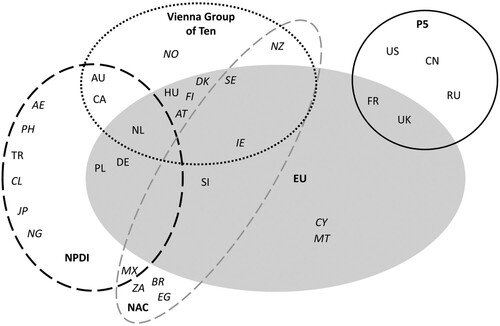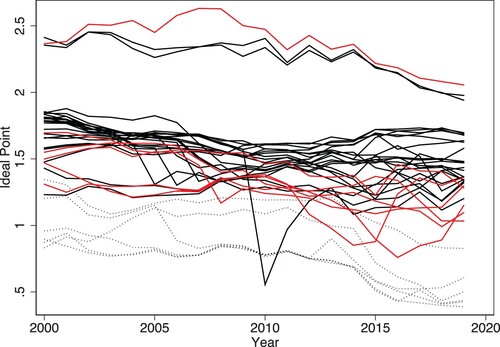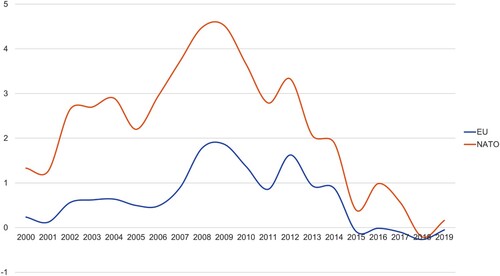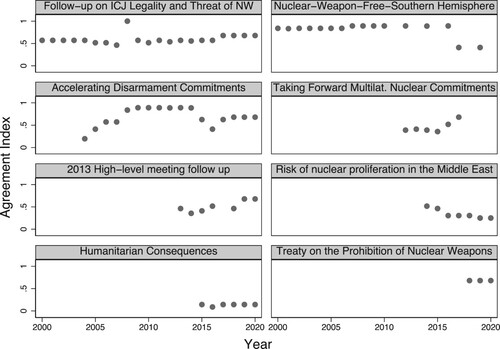Figures & data
Figure 1. EU member states membership in select NPT groupings (as of 2015). Note: Countries co-sponsoring the 2015 Joint Statement on the Humanitarian Consequences of Nuclear Weapons are marked in italics. Note that membership of NAC varied over the course of the period under study (see main text).

Figure 2. Ideal points of EU members since 2000. Legend: solid line represents members of EU and NATO, dotted line represents members of EU but not NATO, red line represents members of NATO but not EU.

Figure 3. Kurtosis of ideal point data over time. Source: own calculation based on Voeten (Citation2020).

Figure 4. Agreement Index for repeated nuclear resolutions. Source: own calculation based on Voeten (Citation2020).

Table 1. Nuclear disarmament resolutions at UNGA.
Table 2. Co-sponsorship of proposals & working papers among EU members at NPT Revcons.

